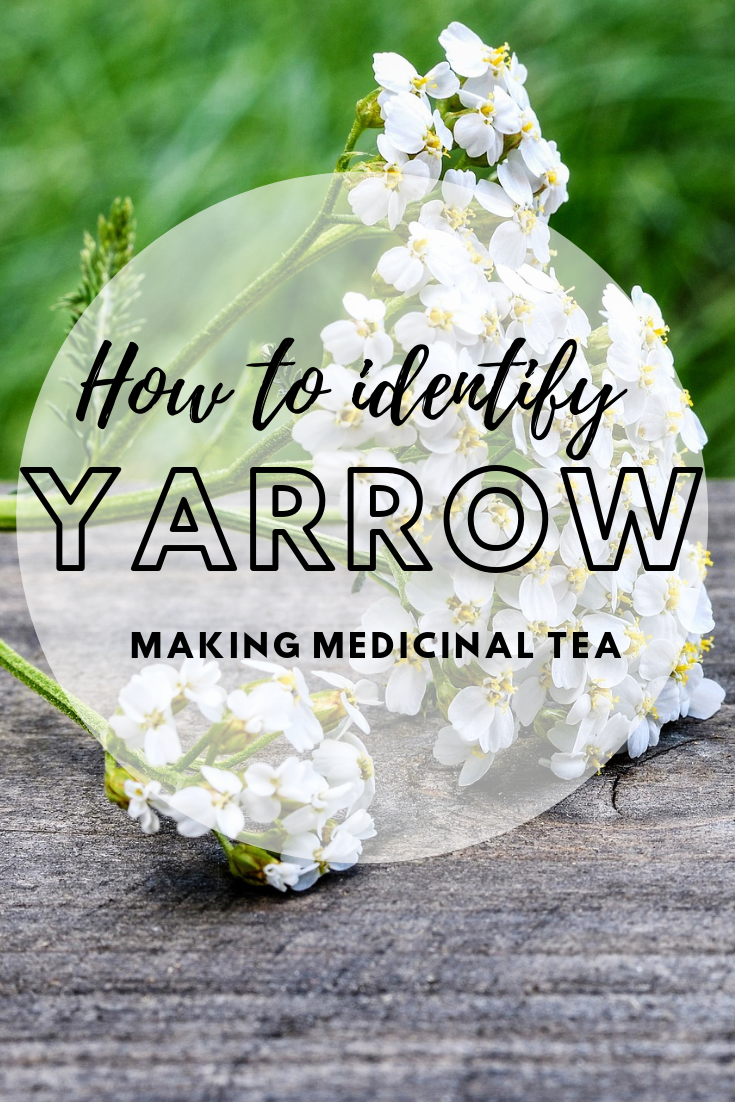Identifying & Harvesting Medicinal Yarrow
- Wild and Growing

- Aug 2, 2019
- 3 min read
Updated: Aug 10, 2019
Identification:
Whether you are brand new at learning edible plants or a pro, yarrow is an incredibly helpful plant with many uses for you to learn. Yarrow is a wild herb identified by its clusters of small white flowers atop a stem that is a 1-3 feet tall. Typically grows in dry soil and blooms in late summer, early fall. The leaves of yarrow grow alternatively on the stem and have many tiny leaflets, almost like lace.
There are two look alikes to yarrow that you need to watch out for.
Most importantly: Water or Poison Hemlock


Water hemlock, pictured above is extremely toxic, but looks very different than yarrow when compared. As you can see from the images above, water hemlock has multiple clusters of tiny white flowers branching off of the center stem. The leaves are arranged adjacently along the stem (compared to alternatively on yarrow) and also have leaflets, but are much larger and less lace like. Water hemlock grows to 6 feet tall, much taller than yarrow.
Another look alike plant: Queen Anne's Lace

Queen Anne's Lace, or wild carrot, also looks very similar to yarrow. It too has a small cluster of white flowers but it has a deep purple center spot. The leaves also have tiny leaflets but are larger than yarrow and less lace like. Queen anne's lace is easier to confuse with water hemlock.
The point is, yarrow does have dangerous look alikes so it is incredibly important that you are 100% positive that the plant you are about to harvest is in fact yarrow. Triple check with multiple resources and when in doubt, spit it out. Take responsibility, do not use this post as your primary resource.
Harvesting:
Once you have successfully identified yarrow, it is time to harness its medicinal powers! You can use all parts of the plant from the roots to the flowers. You can also use it fresh or dried. In this post, we are discussing how to dry and preserve yarrow. Remember that when foraging you need to be sustainable because animals not only rely on it as a source of energy but it also allows the plant to regrow next year.
Herbalists recognize yarrow for three healing energies: drying, bitter, and warming.
Drying energy recognizes the herb's ability to heal blood problems. You can dry and grind it to a powder to sprinkle on cuts to stop the bleeding. You can also crush fresh leaves to make a poultice and rub on bruises. Additionally, you can chew on a bit of rehydrated root to cure toothaches. Yarrow has astringent properties which makes a powerful resource when dealing with wounds at home or in the wild.
Bitter energy recognizes the herb's ability to ease digestive problems. The bitters stimulates saliva, enzymes, and gastric juice production that helps digest food. If you are experiencing a stomach ache, drinking yarrow tea can help.
Warming energy recognizes the herb's ability to heal early signs of a head cold or flu. It's warming effect helps stimulate the immune system which is your first defense when you fall ill. Once again you can make a yarrow tea to help when you feel sick.
Drying Process:
Once you have harvested your yarrow you can begin the drying process, review the steps below:
1. Rinse your yarrow to remove any unwanted guests
2. Remove the leaves and flowers from the stems
3. Dry
a. Dry by using a dehydrator or your oven. When using an oven, set it to the lowest temperature that you can (I set mine for 100F) and let it dry for several hours checking it periodically. It is ready when the stems snap cleanly.
b. Let air dry by hanging it for several days. Herbs are ready when the stems snap cleanly.
4. Store in a container like a mason jar.
5. Steep in water to enjoy!

Hope you learned a lot and are confident in harvesting yarrow. Let me know in the comments below if you have tried yarrow or if you have any favorite recipes.
Thanks for reading,
Hannah
Wild and Growing
#wildedibles #yarrow #edibleplants #howtoidentifyyarrow #safeplants #wildmedicine #survivalskills #herbalism #homesteading #herbalist #wildtea #harvestingyarrow #usingyarrow #identifyingyarrow #poisonhemlock #queenanneslace #brewingtea #yarrowbenefits #wildandgrowing #getoutside #naturalist















Comments